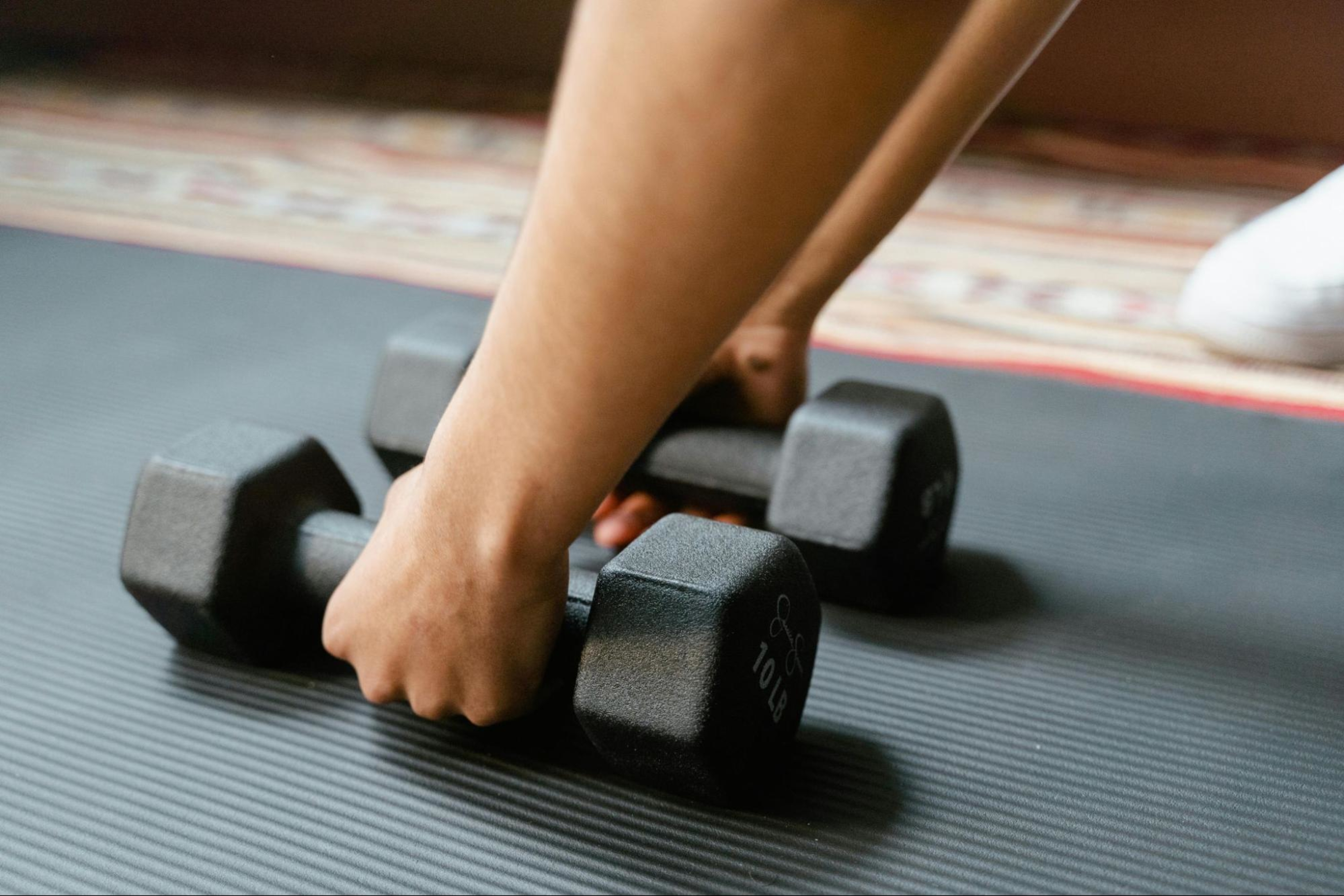How Often to Increase Your Weight When Lifting

Building strength is a journey of consistent progress, but knowing exactly when and how to level up your weights can make all the difference. This is essential for maximizing gains, avoiding plateaus, and staying safe. This guide will help you to understand why progressive overload matters, how to recognize when it’s time to go heavier, and how to do it safely and effectively.
Check out the following topics for our blog:
By understanding these key points, you’ll confidently progress, break through plateaus, and avoid common pitfalls in your lifting journey.
Why increasing weight is important in lifting
Progressive overload is the gradual increase of stress placed upon the body during exercise and is the foundation of strength training. By regularly increasing the weight you lift, you challenge your muscles to adapt, leading to gains in muscle size, strength, and endurance.
Without this progress, your body becomes efficient at handling the same load, and your progress stalls. Lifting heavier weights also supports bone density, connective tissue strength, and overall athletic performance, helping prevent injuries and support healthy aging. Even if growing massive muscles isn’t your goal, gradually increasing light weights is still important for your overall health.

Explore Hydrow's library of strength training workouts.
How to know it’s time to increase your weight in lifting
Recognizing when to increase your weights is a blend of listening to your body and tracking your performance in order to build muscle safely. Here are key signs:
You can easily exceed your target rep range. For example, if your goal is 8–12 reps for muscle growth and you can do 14 or more reps with good form, it’s time to go heavier.
The last few reps feel too easy. Ideally, the final reps should feel challenging—think an 8 or 9 on a 1–10 perceived exertion scale.
You’ve been using the same weight for several weeks and workouts feel too comfortable. A lack of muscle fatigue or visible progress is a sign you’ve adapted.
You can complete two or more reps above your goal for two consecutive workouts. This “2 for 2” rule is a reliable indicator that you’re ready to increase the load.
How often should you increase your weight in lifting?
The frequency of increasing weights depends on your experience, training program, and how your body responds:
Beginners: Often, you can increase weights every 1–2 weeks, sometimes even after every workout, as your body adapts quickly in the early stages.
Intermediate/Advanced lifters: Progress slows, so increases might occur every 2–4 weeks or when you consistently exceed your rep goals.
General guideline: Again, when you can do two or more reps above your target for two sessions in a row, increase the weight.
Always prioritize form over speed of progression. If your form breaks down, it’s better to maintain or even reduce the weight until you can perform the movement safely.
How much weight should you add in lifting?
Adding too much weight too quickly can compromise form and increase injury risk. Here’s how to approach increases:
Upper-body exercises: Add 2–5 pounds (or about 5% of the current weight)
Lower-body exercises: Add 5–10 pounds (or about 5-10% of the current weight)
Dumbbells: Move up in increments (e.g. from 10 to 12 pounds, then to 15 pounds).
The goal is to make the smallest increase that still challenges your muscles, allowing your body to adapt safely.

Explore Hydrow’s library of Circuit Training workouts from around the world.
What to do if you’re not ready to increase your weight
If you’re stuck at a certain weight or can’t increase them without losing form, try these strategies:
Reduce rest periods. Shorten your rest between sets to increase intensity without adding weight.
Change your rep scheme. Try more reps with the same weight or switch to a different set/rep structure (e.g. 3 sets of 12 instead of 4 sets of 8).
Use variations. Incorporate pause reps, slower tempo, or unilateral (single-limb) movements to challenge your muscles differently.
Take a deload week. Reduce weight or volume for a week to allow your body and nervous system to recover. Having a planned period of reduced training intensity or volume can help recovery and prevent burnout.
Check your nutrition and sleep: Sometimes, lack of progress is due to insufficient recovery or fuel.
Remember, plateaus are normal—almost every lifter hits one eventually. The key is to stay patient and strategic.
A sample progression plan for increasing your weight
Here’s a simple plan to help you progress safely and effectively:
Weeks 1–2: Choose a starting weight that allows you to complete your target reps with the last 2–3 reps feeling challenging but doable.
Weeks 3–4: If you can perform two more reps than your target for two consecutive workouts, increase the weight 2–5 pounds (upper body) or 5–10 pounds (lower body). If not, continue with the same weight, focusing on perfecting your form and increasing your reps, if possible
Weeks 5–6: Repeat the process: If you exceed your rep goal, increase the weight. If not, try reducing rest or changing the rep scheme.
Ongoing: Track your workouts, weights, reps, and how each set feels (rate of perceived exertion). Adjust as needed, aiming for small, consistent increases over time.
Don’t stress if you need to stay at the same weight a bit longer—listening to your body always comes first.

Did you know?
Over 90% of Hydrow members are still active one year later.
Tips to progress safely when lifting weights
It can be tempting to quickly increase your load for faster gains, but slow, steady, and safe progression will always deliver better, longer-lasting results. Keep these strategies in mind:
Warm up thoroughly. Prepare your muscles and joints to reduce injury risk.
Prioritize form. Never sacrifice technique for heavier weights.
Increase gradually. Use the smallest increments possible.
Listen to your body. Stop if you feel sharp pain or your form breaks down.
Use a spotter: Especially when attempting heavier lifts.
Track your progress: Keep a workout log to monitor changes and spot plateaus.
Rest and recover: Allow 48 hours between sessions for the same muscle group.
Fuel your body: Eat enough calories and protein to support muscle growth and recovery.
When not to increase your weight when lifting
There are times when it’s best to hold off on adding more weight:
Your form breaks down. Poor technique increases injury risk and reduces the effectiveness of the exercise.
You feel sharp pain (not normal muscle fatigue). This can signal injury or overuse.
You can’t complete the minimum reps in your target range. If you’re failing early, the weight is too heavy.
You’re excessively fatigued or not recovering between workouts. Overtraining can stall progress and increase injury risk.
You’re returning from illness or injury. Focus on rebuilding your base before progressing.
You’re in a deload or recovery week. Planned periods of lighter training are essential for long-term progress.
Let’s get pumped!
Increasing your weights is a vital part of strength training, but it’s not a race. By listening to your body, tracking your progress, and making small, consistent increases, you’ll continue to build strength, muscle, and confidence. Remember, every lifter’s journey is unique—focus on your own progress and try not to compare yourself to others.
Ready to see just how far your strength can go? Explore Hydrow’s library of strength workouts today and start building the body and confidence you deserve.

Explore Hydrow’s library of 5,000+ rowing, circuit training, yoga, Pilates, and mobility workouts.












